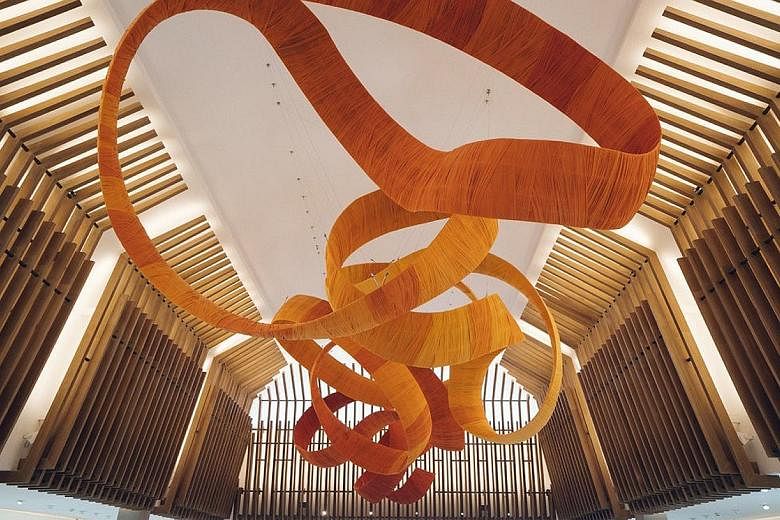NEW YORK • Shhh. Do you hear it? It is the sound of wind whistling through the abandoned malls of the United States.
But in Asia, it is an entirely different story - one full of glimmer; one that is not limited to luxury products, but treats customers as if they were buying luxury; one in which consumers are drawn to an immersive aesthetic experience with shopping as a byproduct, perhaps.
Shanghai Village, an outlet shopping complex created by Value Retail, stretches 473,612 sq ft across the waterfront. Its gleaming promenades are lined by 200 trees. Its bathroom lounges, covered in swirling mosaics in styles by different artists, are booked for events.
In Seoul, a 30,140 sq ft library in Coex Mall includes 50,000 books and magazines. It has couches and reading tables and also serves as a venue for cultural events.
In Siem Reap, Cambodia, an 86,000 sq ft T Galleria houses a multitude of brands alongside reflecting pools, verdant gardens and works by local artists.
In Kowloon, Hong Kong, a 3 million sq ft art and design district 10 years in the making, called Victoria Dockside, will include an art museum, a green wall, a luxury hotel, apartments, offices and retail.
These projects embody a new way of thinking about the physical space where stores congregate - prioritising the idea of content over contents, further demonstrating the way in which the real and virtual worlds increasingly intertwine.
Not because they offer video screens or iPads for ordering, but because of a more fundamental conceptual connectivity.
Mr Luca Solca, head of luxury goods research at Exane BNP Paribas, said: "The context for stores is more and more important because you have to make people want to get out of their homes and away from their screens."
Going to a store "should feel like going to a hotel or resort, where you are taking away a memory because you are touched by an emotion you want to revisit", said Mr Scott Malkin, founder and chairman of Value Retail.
As a retailer, this means "you are not serving a person who needs an item", he added. "You are serving a person who needs an experience."
And that changes how the retailer does things. "The reality is our experience in China will set the gold standard for what's possible in other international locations," he said.
Whatever you do, just do not call it a "shopping centre".
NYTIMES

